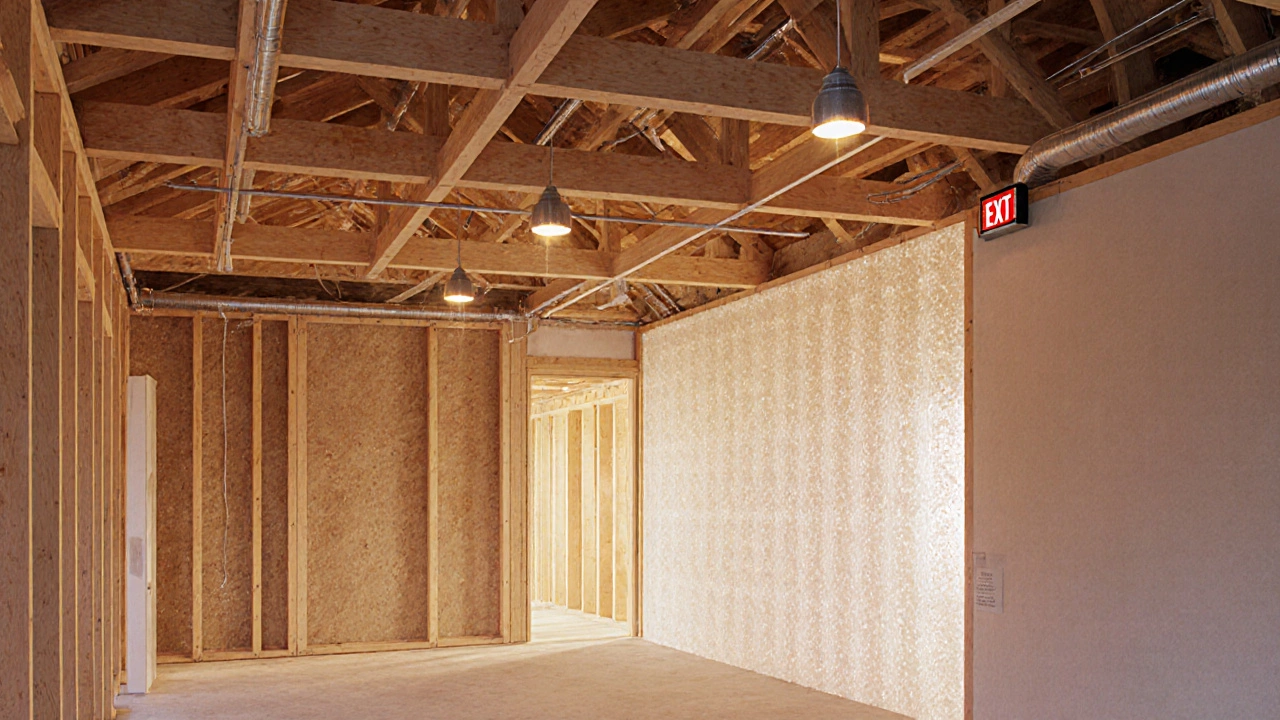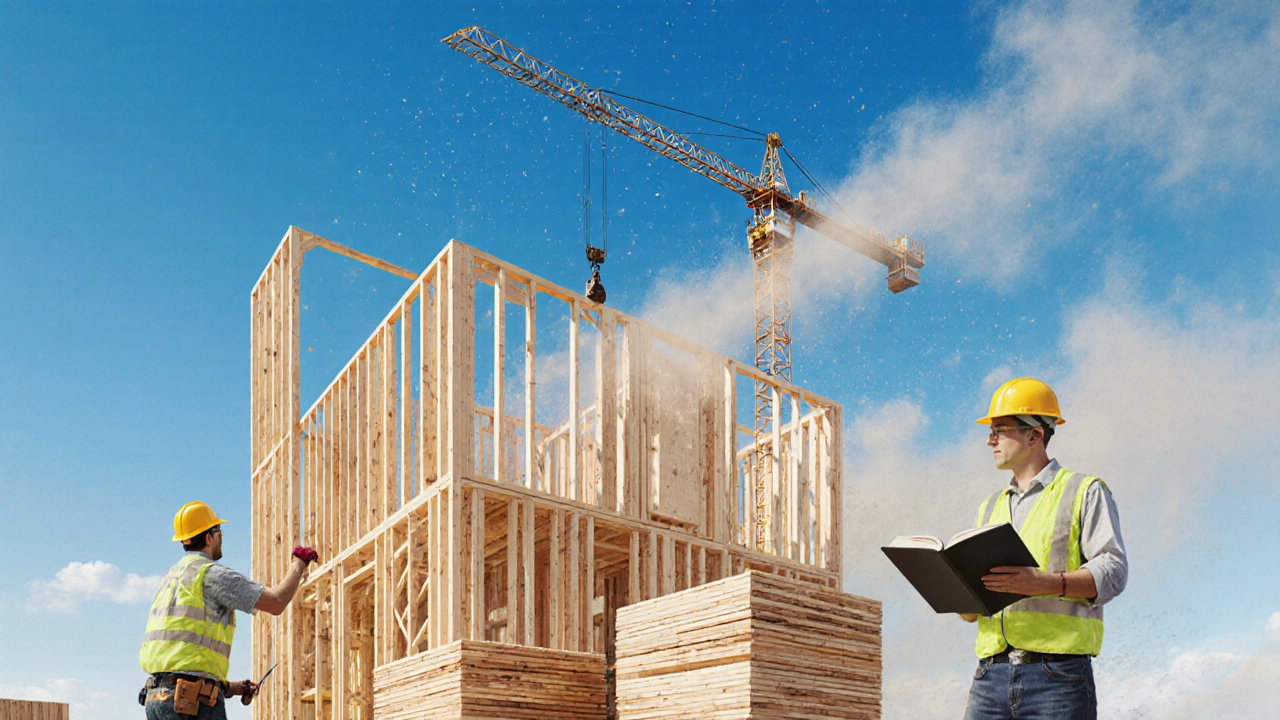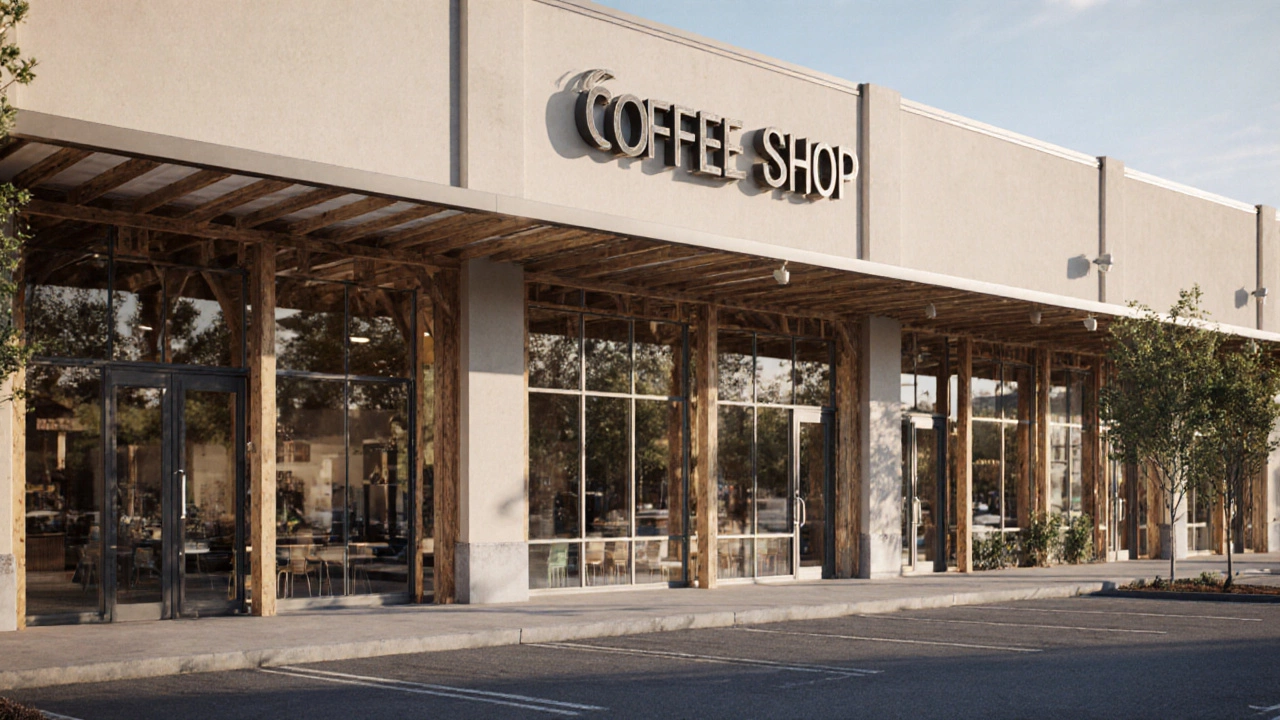Type 5 Fire Safety Compliance Checker
Fire Safety Compliance Tool
Check if your Type 5 commercial building meets fire safety requirements based on building size, stories, and occupancy type. This tool is based on International Building Code (IBC) standards.
When you walk into a small retail store, a strip mall, or a single-story office building, you’re likely standing inside a Type 5 building. It’s the most common construction type for low-rise commercial spaces in the U.S. and many other countries - but most people don’t even know it exists. Unlike skyscrapers with steel skeletons or concrete warehouses, Type 5 buildings are mostly made of wood. And while they look simple, their design, limitations, and safety rules are tightly controlled by building codes. If you’re involved in commercial real estate, property management, or construction planning, understanding Type 5 construction isn’t optional - it’s essential.
What Exactly Is Type 5 Construction?
Type 5 construction is defined by the International Building Code (IBC) as a structure where the primary load-bearing elements - walls, floors, and roofs - are made of wood or other combustible materials. That means the framing, sheathing, and even some roofing materials can burn. It’s the opposite of Type I or II construction, which use steel and concrete that don’t ignite. But here’s the twist: just because it’s made of wood doesn’t mean it’s unsafe. Modern Type 5 buildings follow strict fire-resistance standards, fire-retardant treatments, and sprinkler requirements to stay compliant.
The term ‘Type 5’ comes from a five-category classification system used by building officials to group structures by fire resistance and material type. Type 5 is the least fire-resistant of all, but it’s also the most cost-effective for buildings under three stories. It’s the go-to choice for small businesses, restaurants, clinics, and light industrial spaces.
Why Do Builders Choose Type 5 for Commercial Projects?
Cost is the biggest driver. Wood is cheaper than steel or concrete, and it’s easier to work with. A small retail building using Type 5 construction can save a business 20-30% on construction costs compared to a similar building made with non-combustible materials. Labor is also simpler - most framing crews are trained in wood framing from residential work, so there’s no need for specialized welders or crane operators.
Speed matters too. A typical Type 5 commercial building can be framed in under two weeks. Compare that to a steel-framed structure, which might take six weeks just for the skeleton. For landlords leasing space to tenants like coffee shops, pharmacies, or gyms, getting open faster means getting rent payments sooner.
There’s also flexibility. Wood framing allows for easier modifications later. Want to move a wall? Cut out a section of drywall, remove a few studs, and you’re done. In a concrete or steel building, that kind of change requires permits, structural engineers, and heavy equipment.
Where You’ll Find Type 5 Buildings - And Where You Won’t
Type 5 construction is everywhere in low-density commercial zones. Look for it in:
- Strip malls with 1-3 storefronts
- Small medical offices and dental clinics
- Local banks and credit unions
- Fast-food restaurants and convenience stores
- Auto repair shops and small retail warehouses
But you won’t find Type 5 in high-risk or high-occupancy buildings. Building codes ban it for:
- Hospitals and nursing homes
- Schools and daycare centers
- Theaters or auditoriums seating more than 50 people
- Buildings over three stories tall
- Structures in high-fire-risk areas like forests or wildfire zones
These restrictions exist because of fire safety. In a crowded space with limited exits, a fire in a wood-framed building can spread too quickly. That’s why codes require sprinklers, fire-rated walls, and exit signage in many Type 5 buildings - even if they’re small.

Fire Safety Rules for Type 5 Buildings
Just because Type 5 uses wood doesn’t mean it’s a fire hazard waiting to happen. Modern building codes have layered protections:
- Fire-rated assemblies: Walls and ceilings between units or public areas must resist fire for 1-2 hours. That’s often achieved with 5/8-inch Type X drywall, which contains glass fibers to slow burning.
- Automatic sprinklers: Required in most new Type 5 commercial buildings over 5,000 square feet, and often in older ones during renovations.
- Fire-retardant-treated wood (FRTW): Some framing members are chemically treated to resist ignition. This is common in roof trusses and exterior walls.
- Exit requirements: At least two exits are mandatory, spaced apart so one can’t be blocked by fire.
- Interior finish ratings: Wall coverings and flooring must meet flame spread ratings. Vinyl wallpaper or carpet with high flammability is banned in many commercial applications.
These rules aren’t suggestions - they’re enforced during inspections. A building inspector will check for the right drywall thickness, verify sprinkler head placement, and confirm that all electrical wiring is properly boxed. Skipping these steps can lead to failed inspections, fines, or even forced closures.
Type 5 vs Other Construction Types
Here’s how Type 5 stacks up against other common construction types:
| Construction Type | Main Materials | Fire Resistance | Typical Use | Cost Level |
|---|---|---|---|---|
| Type I | Steel, concrete | High (2-4 hours) | Skyscrapers, hospitals, large warehouses | Very High |
| Type II | Steel, concrete (no wood) | Medium (1-2 hours) | Shopping malls, office towers | High |
| Type III | Masonry walls, wood roof/floor | Medium (1 hour) | Older storefronts, brick buildings | Medium |
| Type IV | Heavy timber (large wood beams) | High (2+ hours) | Historic buildings, barns, some modern industrial | High |
| Type V | Wood framing, light wood construction | Low to medium (0.5-1 hour) | Small retail, clinics, single-story offices | Low |
Type 5 is the only one that relies almost entirely on light wood framing. Type III has masonry walls, which slow fire spread. Type IV uses thick timber that chars slowly, protecting the inner structure. Type 5 doesn’t have those advantages - so it depends on fireproofing materials and systems to compensate.
Common Problems With Type 5 Buildings
Even with code compliance, Type 5 buildings have known weaknesses:
- Moisture damage: Wood rots if exposed to leaks or poor ventilation. Roof leaks or plumbing issues can lead to hidden decay in wall cavities.
- Termite infestation: In warm climates, termites can eat through framing without visible signs until structural damage occurs.
- Outdated wiring: Many older Type 5 buildings still have knob-and-tube or aluminum wiring, which increases fire risk.
- Insufficient sprinklers: Some buildings built before 2010 don’t have full sprinkler systems, even if they’re now used for higher-risk businesses like restaurants.
- Non-compliant renovations: Owners sometimes remove fire-rated walls to create open layouts, violating code and creating safety hazards.
These aren’t just maintenance issues - they’re legal liabilities. If a fire occurs in a non-compliant building, insurance may deny claims, and owners can be held responsible for injuries or deaths.

What to Look for When Buying or Leasing a Type 5 Building
If you’re considering a commercial property, here’s what to check:
- Ask for the original building permit and inspection records. Was it built to current code?
- Check for sprinklers. If there aren’t any, find out if they’re required under current occupancy rules.
- Look for signs of water damage - stained ceilings, warped baseboards, musty smells.
- Verify the number of exits. Are they clearly marked and unobstructed?
- Ask about the type of drywall used. Type X drywall should be used in fire-rated walls.
- Request a fire safety audit from a licensed inspector. It typically costs $300-$800 but can save you thousands later.
Don’t assume a building is safe just because it’s been occupied for years. Codes change. Uses change. What was acceptable in 2005 might be illegal today.
The Future of Type 5 Construction
Type 5 isn’t going away - but it’s evolving. New materials are making it safer and more efficient:
- Mass timber products: Engineered wood like cross-laminated timber (CLT) is being tested in Type 5 applications for better fire resistance.
- Fire-resistant coatings: Sprayed-on intumescent paints can turn wood into a barrier that swells under heat, blocking flames.
- Smart sensors: New buildings are integrating smoke and heat sensors that alert emergency services automatically.
- Green building credits: Some regions offer tax breaks for Type 5 buildings that use sustainably sourced wood and energy-efficient insulation.
Even with these advances, the core advantage remains: Type 5 construction is fast, affordable, and flexible. For small businesses and investors, it’s still the smartest way to enter the commercial property market.
Is Type 5 construction safe for commercial use?
Yes, when built and maintained to current building codes. Type 5 buildings use fire-rated drywall, sprinklers, and treated wood to meet safety standards. They’re commonly used for small retail, clinics, and offices. The key is regular inspections and avoiding unauthorized modifications that remove fire protection.
Can you convert a Type 5 building into a restaurant?
It’s possible, but you’ll likely need upgrades. Restaurants require automatic sprinklers, grease hood fire suppression, and fire-rated walls around cooking areas. Many older Type 5 buildings lack these, so renovations can cost $15,000-$50,000 depending on size. Always check with your local fire marshal before signing a lease.
Why can’t Type 5 buildings be more than three stories?
Wood framing loses structural stability as height increases. Above three stories, the risk of fire spread and collapse rises too high for safe evacuation. Building codes limit Type 5 to three stories to ensure occupants have enough time to exit before structural failure occurs. Taller buildings require steel or concrete frames.
Does Type 5 construction have good insulation?
Yes - wood framing allows for deep wall cavities that can hold high-performance insulation like spray foam or cellulose. In fact, Type 5 buildings often have better thermal performance than steel-framed structures because wood is a natural insulator. Properly insulated Type 5 buildings can reduce heating and cooling costs by 30% compared to older commercial buildings.
Are Type 5 buildings more prone to mold?
They can be, if moisture isn’t controlled. Wood absorbs water, and if leaks go unrepaired, mold can grow inside walls. Proper ventilation, vapor barriers, and quick leak repairs prevent this. Commercial Type 5 buildings should have moisture monitoring systems in basements and crawl spaces, especially in humid climates.
Final Thoughts
Type 5 construction isn’t the flashiest or strongest building method - but it’s the most practical for small commercial spaces. It’s affordable, quick to build, and adaptable. The real challenge isn’t the material itself - it’s keeping up with code changes and maintenance. A well-maintained Type 5 building can last 50+ years. A neglected one can become a liability in months. If you’re managing, buying, or leasing one, treat it like any other commercial asset: inspect regularly, upgrade when needed, and never assume it’s safe just because it’s been standing for years.
